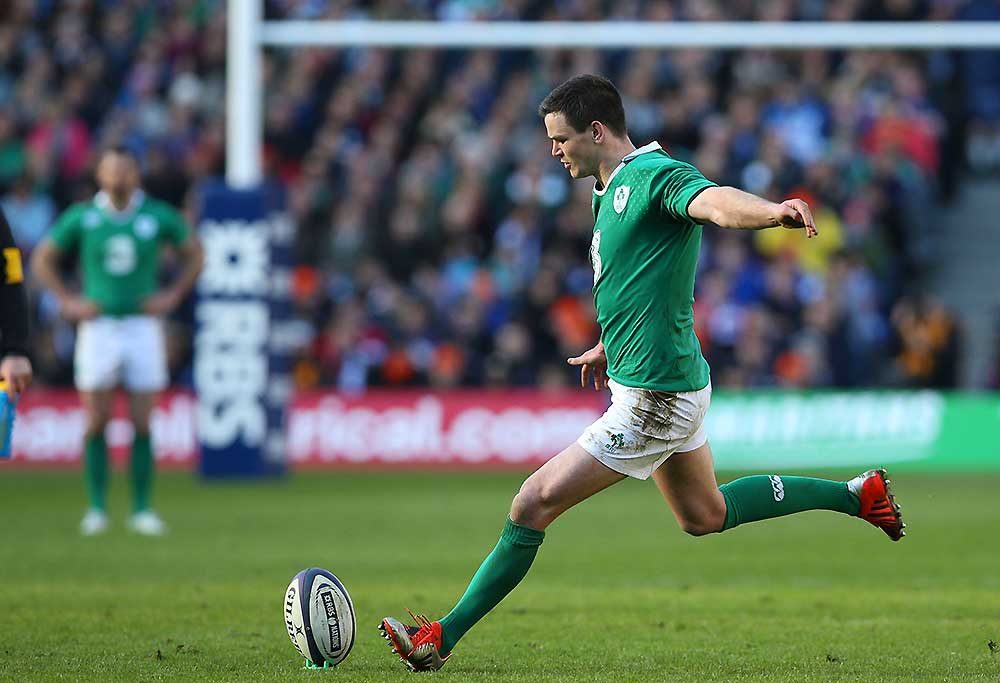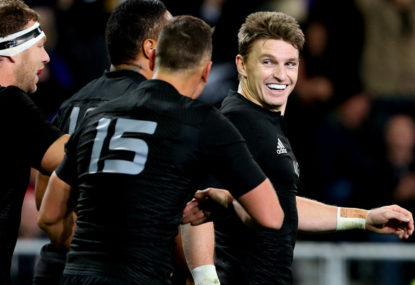As of March 23, it is D-Day minus 545 until the 2019 Rugby World Cup. 18 months out is too short a timeframe in a Rugby World Cup cycle to completely reinvent a team, but it is long enough to tinker and make adjustments.
Some teams will be over the moon with how they are travelling and, if anything, will be hoping they haven’t peaked too early. New Zealand and Ireland and, until recently, England fall into this category.
Then, there is the next level of tier 1 teams who will be content that they are tracking nicely, with plenty of time in the bank to build on their core personnel, develop further their depth players and tweak their skills and structures. Scotland and Wales fall into this category.
Then there are teams who need some major adjustments in personnel and tactics, just short of total reinvention. These teams are Australia, South Africa, Argentina, France and now England.
It should concern Southern Hemisphere supporters we have three of our major teams in this last category. Sure, it’s not panic stations yet, but the trajectory is pretty flat and these teams aren’t exactly shooting the lights out!
After their Six Nations performance, English fans will be hoping the Eddie Jones’ effect is not a short-term sugar hit and more of a slow protein build with a pause or two to consolidate muscle mass before the big push in 2019!
New Zealand and Ireland
So why is it some teams are caught in this flat or even downwards trajectory while other teams are sitting pretty or building steadily? I think one key factor is stability, quality, and depth in the halves combinations.
New Zealand are travelling very well with Aaron Smith and Beauden Barrett as a World Class halves pairing, and some pretty handy backup options too at No. 9 and No. 10 if their first choices are injured.
Nonetheless, the All Blacks seem to be a much more dangerous beast when the highly consistent and influential Smith is calling the shots instead of TJ Perenara.
Ireland also have another World Class halves combination in Conor Murray and Jonathan Sexton and, due to the superb accuracy of both their kicking games, they are almost irreplaceable in the team’s game plan.
I am not convinced Ireland can play the highly effective but structured game plan they want without the unique skill sets these two players bring. But right now Ireland’s halves have come out of the Six Nations unscathed and are going great. Hopefully, they bring these big guns with them to Australia in June and give the Wallabies a thorough rugby examination!

Ireland’s Johnny Sexton. (AFP PHOTO / IAN MACNICOL)
Scotland and Wales
Then there are Scotland and Wales. I think if you were looking at a halves combination capable of a major upset in a Rugby World Cup, Finn Russell and Greg Laidlaw would be it.
Laidlaw’s goal kicking, leadership, and Russell’s x-factor playmaking ability at flyhalf directing a potent Scotland backline with Stuart Hogg lurking at No. 15 can be an explosive mix. Especially so if Gregor Townsend stays true to the high tempo, play what’s in front of you, style of rugby the Scots are trying to master.
However, the gap in quality behind Laidlaw especially must be concerning after Ali Price’s limited showings in the Six Nations. Russell seems to be able to bring his outside backs and Hogg’s attacking ability from fullback into a game much better than his understudies as well.
Closing the quality gap in the halves is a definite work-on for Scotland but entirely achievable within the type of chaos-oriented style they like.
Wales had injury problems in the Six Nations, losing their first choice halves pairing of Rhys Webb and Dan Biggar, as well as Rhys Priestland. This allowed, however, some examination of future No. 10 options in Rhys Patchell and even Gareth Anscombe, both inexperienced Test players who look to have some potential to create more depth at flyhalf.
Biggar’s experience, ability under the high ball, and backup goal kicking add stability to a Welsh side that is starting to play with more ambition and width.
Webb is a World Class halfback and the Scarlets’ bench options aren’t quite in the same class yet. Although, compared to Australia, Argentina, France and South Africa, the Welsh halves options are quite solid.
The Rest
Most Aussie rugby followers are well aware there is a chronic lack of depth in our rugby halves. Luckily, Will Genia has been playing good rugby and is back in Australia, but his understudy is anyone’s guess. Same goes for Bernard Foley.

What can the Wallabies expect from Bernard Foley? (AAP Image/Dave Hunt)
Whether one of the younger Aussie No. 9s will be ready by 2019 is questionable if Nick Phipps can’t regain his Waratahs starting spot and form.
Australia’s critical weakness for the next Rugby World Cup is in the lack of depth in the halves and the consistency of our first choice players in these positions.
Whether our halves even have the full set of skills needed to implement varied or tailored game plans during a Rugby World Cup campaign is a separate issue.
South Africa and Argentina and France are struggling to find their best halves pairings before the Rugby World Cup and then implement an effective style of rugby they are capable of controlling with these personnel.
France at least has the luxury of some real quality options at halfback, while some encouraging green shoots appeared in their play during the Six Nations.
South Africa needs to decide who their best halves are and that are eligible for selection. If the Springboks can sort this out in 2018 under their new coach, I have no doubt they could very rapidly present the usual threat they are come World Cup time.
The Pumas have regressed since the last World Cup and badly need direction and leadership from their halves. Tomas Cubelli and Nicolas Sanchez are both solid players but are they world class?
If they could only play more often like the Jaguares did against the Tahs recently, Argentina could easily repeat its heroics of previous World Cups. Their performances since 2015 suggest this is unlikely.
That leaves England. Bruised after their Six Nations campaign, George Ford and Richard Wigglesworth may be long term selection casualties from the starting side, leaving Owen Farrell to step up as the first choice flyhalf and Eddie’s two playmaker system in jeopardy.
There is no doubt England missed the quality of Ben Youngs at halfback in the tournament, with neither Danny Care nor Wigglesworth making much of a decisive impact. Suddenly, England looks a bit vulnerable in its halves combinations and lacking quality depth.
I put England in a similar situation to South Africa, sort out the major issue with the halves’ ability to control a game then both have the forwards to capitalise and make it deep into the knockout Rugby World Cup stages.
At D Day-545, my money would be on a top four of New Zealand, Ireland, Wales and Scotland either developing or coming in already equipped with the blend of quality, experienced and skilled halves needed to win the crunch tournament games at a Rugby World Cup.
The rest of the top tier teams’ halves are lacking in depth, consistency or quality. Some are closer to addressing these issues than others, but the clock is ticking.
I guess we’ll find out more in the June series, when Ireland and England visit Australia and South Africa.
One thing is for sure; 2018 is crucial for all these teams in the prelude to a World Cup year, before the phoney war starts and coaches begin protecting their key players, limiting their exposure to injury through rotation or rest.
If it doesn’t work by the end of 2018, then chances are it ain’t going to work next year.
So Roarers, which teams have the halves to win the next Rugby World Cup? Can the rest sort it out in time?
































































































